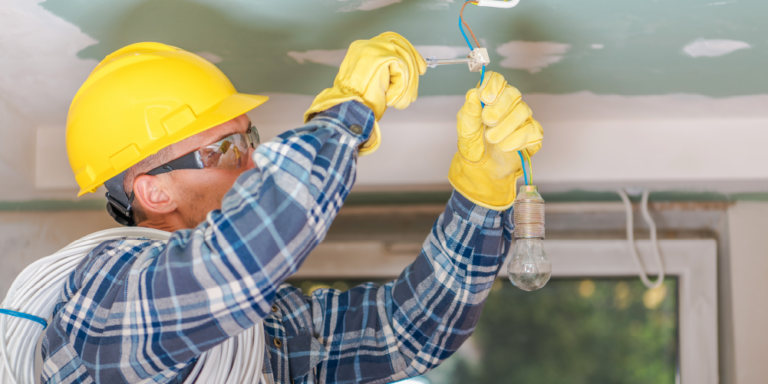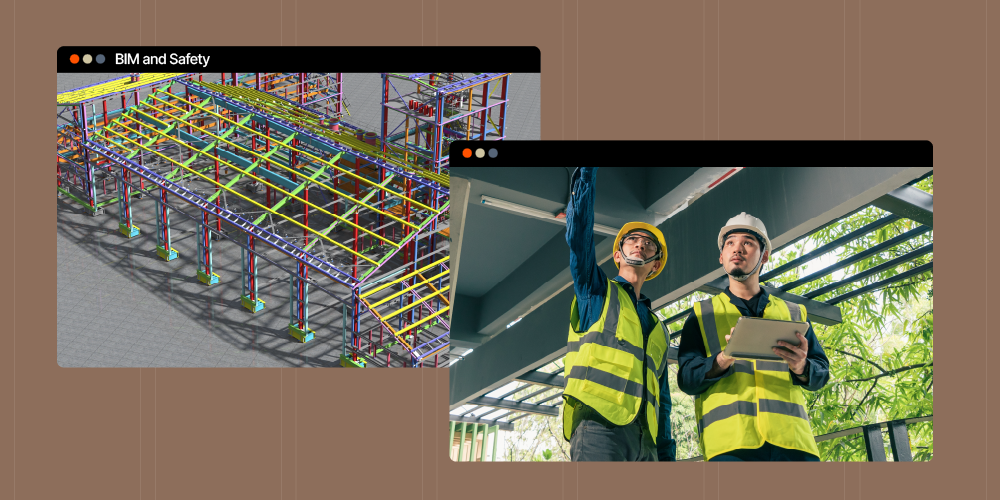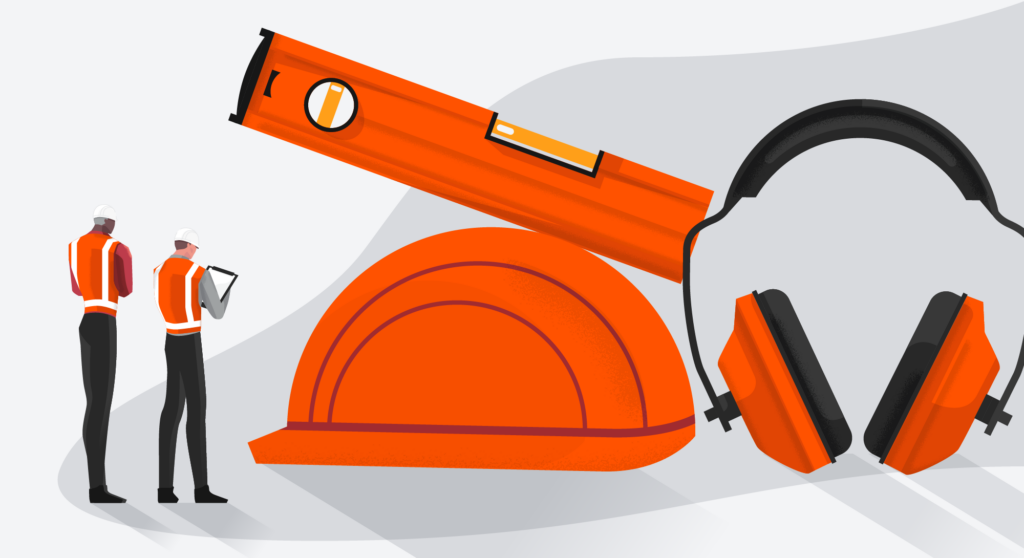— 8 min read
An Electrician’s Guide to PPE on the Jobsite
Last Updated Feb 14, 2024
Last Updated Feb 14, 2024

Personal Protective Equipment (PPE) helps to ensure the safety and well-being of construction workers, including electricians, who face a multitude of hazards on job sites. PPE encompasses various gear and clothing designed to protect workers from potential hazards and minimize the risk of injury. Electricians in particular are exposed to risks such as electrical shock, arc flash, and falls, making the correct use of PPE vital in safeguarding their lives.
Electrical shock is one of the Occupational Safety and Health Administration’s (OSHA) focus four training topics. With 152 shock-related fatalities occurring in the workplace in 2021, it is imperative to understand the significance of PPE and the role it plays in protecting electricians from the inherent dangers they face daily. This article will delve into the various aspects of PPE, its importance for electricians, and how it can help prevent injuries and save lives on construction sites.
Learn more: Top OSHA Violations in Construction
Table of contents
PPE requirements for electricians
OSHA standards highlight federal regulations regarding PPE for the construction industry. Head and face protection, along with eye and hearing protection, are essential components of PPE for electricians. Hard hats safeguard the head from electrical hazards and potential impact from falling or flying objects. They should be non-conductive and well-fitted for optimal protection. Safety glasses or shields protect the eyes from debris and arc flash, while hearing protection such as earplugs or earmuffs can help prevent hearing damage from loud noises commonly associated with construction work.
Torso & full-body protection
Torso and full-body protection are crucial for electricians, especially when working with high-voltage systems or in areas with a risk of arc flash. Flame-resistant (FR) clothing should be worn to protect the body from thermal hazards, while arc flash suits provide an additional layer of protection for the entire body.
Hand & limb protection
Hand and limb protection, with insulating rubber gloves worn underneath leather protectors, shield the hands from electrical hazards. These gloves must be tested before the first issue, then every six months afterward by a third party to ensure their effectiveness. Additionally, the gloves must be tested if there are insulation concerns, after use without protectors, after repair, and if there are any signs of defects.
Foot protection
Foot protection should consist of non-conductive, sturdy shoes or boots that provide adequate support and protection against electrical hazards and impacts. Steel-toed boots should be avoided, as they can be conductive. Fall protection and self-rescue gear are necessary for electricians working at heights or in confined spaces.
Fall protection
Harnesses and other fall arrest systems can help prevent injury in the event of a fall, while self-rescue equipment enables workers to lower themselves to safety if they become stranded. Insulated protective equipment (IPE), such as screwdrivers, hammers, and pliers, is another essential aspect of an electrician's PPE. Tool manufacturers invest in research and development to produce high-quality, insulated tools that minimize the risk of electrical shock while performing tasks.
Common hazards for electrical contractors
Electrical hazards are a significant threat to construction workers, often resulting in serious injuries or fatalities.
Power lines
One common hazard is contact with power lines, which can occur when workers accidentally come into contact with overhead or underground power lines while using tools, equipment, or machinery. Lack of ground-fault protection can also lead to injuries, as it allows electrical currents to flow through unintended paths, such as a worker's body.
Improper grounding
A missing or discontinuous path to ground can cause an electrical fault, which can lead to an electric shock or arc flash. Using damaged or modified electrical tools or not following the prescribed manner for equipment can create dangerous situations. Lastly, improper use of extension and flexible cords, including overloading, using frayed cords, or running cords through water, can result in electrical accidents.
Confined spaces & struck-by accidents
Underground work, such as working in trenches or vaults poses additional risks to electricians, including cave-ins, engulfment, and confined spaces. Furthermore, operating heavy machinery or working around large equipment exposes electricians to the risk of being struck by vehicles.
Traffic safety and working at night are also concerns, particularly for those operating line trucks or bucket trucks, as poor visibility and driver fatigue can lead to accidents.
Falls, trips & slips
Apart from electrical hazards, electricians face a variety of other dangers on the job site. Falls are a major concern, as workers often operate at heights and can fall from ladders, scaffolding, or elevated surfaces. Trips and slips can result from cluttered workspaces or uneven surfaces, leading to injuries or even fatalities. Cuts and scratches are also common, particularly when workers handle sharp tools, materials, or debris.
Completing a hazard assessment prior to beginning work on a project can help electricians lower their risk of being injured on the job.
PPE hazard assessments
Personal protective equipment hazard assessments are vital for the well-being of electricians and workers in various industries. Hazard assessments set out to identify potential risks for employees to work safely and prevent them from sustaining any accidents due to hazardous conditions.
By examining specific protective measures and equipment for roles and job functions, companies can ensure an employee's safety on the job. The assessment should be conducted on a regular basis so that changes in the project or task are acknowledged and addressed without delays.
Conducting a PPE hazard assessment consists of identifying risks associated with certain tasks and developing corresponding protective measures according to the work environment. Certified safety professionals, as well as designated safety representatives, typically develop comprehensive lists of job tasks and try to comprehend every possible hazard associated with each one.
As the project progresses, they need to pay attention to any changes to adjust protective measures or equipment when necessary. Having an adept unit responsible for regularly implementing these assessments is crucial for minimizing any workplace hazards the staff faces.
Hierarchy of controls
The hierarchy of controls serves as a useful tool in helping identify the most suitable course of action when protecting workers from occupational hazards. It outlines five levels of control, from elimination at the top, followed by substitution, engineering controls, administrative controls, and then finally, PPE at the bottom.
The application for electricians is specific, as they should aim to eliminate or control a hazard before considering PPE as their main form of protection. Common terms for hazard assessments include Job Hazard Analysis (JHA) and Safety Risk Assessment (SRA). These analyses emphasize the importance of continuously evaluating and updating safety procedures to maintain a secure working environment for all employees.
Read more on how to complete a Job Hazard Analysis in construction.
PPE training for electricians
Personal protective equipment training gives construction workers the information they need to stay protected while working in hazardous environments. This training provides electricians with the knowledge and skills necessary to select, use, and maintain appropriate PPE to minimize the risk of injury. OSHA has established specific requirements for PPE in order to protect workers from potential hazards. These requirements mandate employers conduct a hazard assessment to identify and select appropriate employee PPE. Additionally, employers must provide training on PPE usage, maintain and periodically inspect PPE, and ensure that employees wear the appropriate PPE for their tasks.
Per OSHA’s PPE guidelines, employees are responsible for inspecting their equipment on a per-use basis and ensuring it is in good working order.
If PPE is damaged, out of date, or not functioning correctly, employees must remove it from service and notify the appropriate personnel. On the other hand, employers are responsible for assessing the workplace for potential hazards and selecting the appropriate PPE for their employees. They must also inspect and maintain PPE to ensure it remains in good condition.
PPE storage and maintenance
Proper storage and maintenance of electrical PPE are also important for its effectiveness and longevity. Best practices include storing gloves, hard hats, and other PPE items in a clean, dry, and temperature-controlled environment away from direct sunlight, chemicals, and sharp objects. PPE, such as gloves and hard hats, should be replaced according to the manufacturer's recommendations or when they show signs of wear or damage.
Hang up harnesses and other fall protection equipment when not in use to prevent damage and make inspections easier. Regular inspections, proper cleaning, and following the manufacturer's guidelines for maintenance and replacement will help ensure that electrical PPE remains in good working order and continues to provide the necessary protection for electricians.
The importance of PPE for electricians cannot be overstated. Wearing the correct PPE can prevent injuries, save lives, and create a safer working environment. Both employers and employees must be diligent in understanding and adhering to OSHA standards for electrical protective equipment. Proper training, hazard assessments, and the maintenance and storage of PPE are all critical components in ensuring the safety and well-being of electricians on construction job sites.
For more information on PPE safety for electricians, consult OSHA’s guidelines, industry best practices, and manufacturer recommendations for specific PPE. By staying informed and proactive, electricians can reduce the risks associated with their work and maintain a safe and productive workplace.
Was this article helpful?
Thank you for your submission.
100%
0%
You voted that this article was . Was this a mistake? If so, change your vote here.
Scroll less, learn more about construction.
Subscribe to The Blueprint, Procore’s construction newsletter, to get content from industry experts delivered straight to your inbox.
By clicking this button, you agree to our Privacy Notice and Terms of Service.
Categories:
Tags:
Written by
Bob Hanes
14 articles
Bob Hanes is a professional writer and entrepreneur. He previously worked as a military sales and applications engineer for an aerospace firm, and cofounded a biotech company that creates drug screening solutions for the pharmaceutical industry. Bob has an MBA from the University of Buffalo in Logistics, Materials, and Supply Chain Management, and a BE in Mechanical Engineering. He is an avid Buffalo Bills fan.
View profileClark Jensen
10 articles
Clark Jensen joined Procore as a Senior Strategic Product Consultant, Quality & Safety where he spearheads product knowledge education and executes product demonstrations. He brings several years of experience in roles both on and offsite as a former senior project safety manager for a general contractor in Salt Lake City, and a senior risk control consultant for a large U.S.-based insurance firm.
View profileExplore more helpful resources

The Strategic Partnership Between Construction Safety and HR
A construction safety manager’s role is significant: It entails broad oversight over the construction workplace to prevent incidents that could cause worker injury or property damage. In addition to this...

Enhancing Construction Safety with BIM Technologies
The construction industry is no stranger to tools: Even ancient civilizations developed mallets and axes to make their work easier. Today’s latest tools look different, but they can be as instrumental...

Construction Safety Training – Goals, Benefits & Emerging Trends
Construction safety training (CST) educates workers about the risks they face on construction sites and teaches them how to prevent accidents, injuries and fatalities. The construction industry has the highest...

Technology for Construction Safety: Strategies to Supercharge and Scale Safety Practices
The construction industry is no stranger to the arrival of new technology, and builders are realizing its many benefits. Modernization across the industry is helping contractors streamline operations, enhance efficiency,...